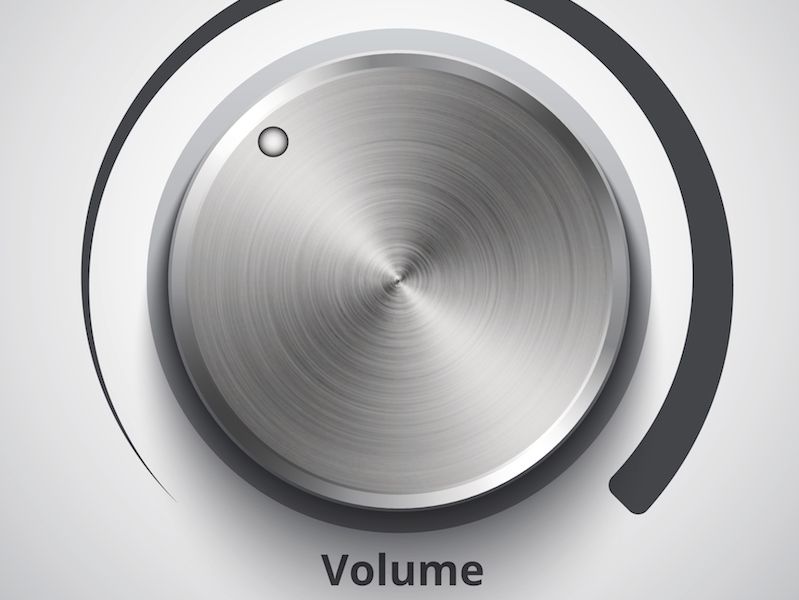
Have you ever gone to the beach and seen one of those “Beware of Shark” warnings? It’s not hard to realize that you should never disregard a warning like that. You might even rethink swimming at all with a sign like that (if the sign is written in big red letters that’s especially true). But people usually don’t heed warnings about their hearing in the same way for some reason.
Current research has found that millions of individuals neglect warning signs regarding their hearing (these studies exclusively looked at populations in the UK, but there’s little doubt the problem is more global than that). Awareness is a big part of the problem. To be afraid of sharks is rather intuitive. But fear of loud noise? And the real question is, what volume level is too loud?
Loud And Hazardous Sound is Everywhere Around us
Your hearing isn’t just in peril at a live concert or on the floor of a machine shop (although both of those venues are, indeed, harmful to your hearing). There are potential dangers with many common sounds. That’s because it’s not exclusively the volume of a sound that is dangerous; it’s also how long you’re exposed. Even low-level noises, including dense city traffic, can be damaging to your ears if you are exposed for more than a couple of hours.
Read on to find out when sound gets too loud:
- 30 dB: This is the volume level you would find in normal conversation. You should be just fine at this volume for an indefinite length of time.
- 80 – 85 dB: This is the volume of heavy traffic, lawn equipment, or an air conditioning unit. This level of sound will usually become damaging after two hours of exposure.
- 90 – 95 dB: Think of the noisiness of a motorcycle. This level of exposure gets dangerous in as little as 50 minutes of exposure.
- 100 dB: This is the level of noise you may encounter at a mid-size sporting event or an oncoming subway train (depending on the city, of course). 15 minutes of exposure will be enough to be dangerous at this volume.
- 110 dB: Have you ever turned your Spotify music up to max volume? That’s normally around this sound level on most smartphones. 5 minutes will be enough to be harmful at this level.
- 120 dB and over: Any sound over 120 dB (think loud rock concerts or very large sports events) can produce immediate damage and pain in your ears.
What Does 85 Decibels Sound Like?
Generally, you should look at anything 85 dB or above as putting your ears in the danger zone. But it can be hard to recognize how loud 85 dB is and that’s the difficulty. It’s not tangible in the way that a shark is tangible.
And hearing cautions often get neglected for this reason especially when the sound environment isn’t loud enough to cause pain. Here are a couple of potential solutions:
- Sufficient training and signage: This refers to workspaces, in particular. The significant hazards of hearing loss can be reinforced by training and sufficient signage (and the benefits of protecting your hearing). Signage could also let you know just how noisy your workplace is. Training can help employees know when hearing protection is required or recommended.
- Download an app: Your hearing can’t be immediately safeguarded with an app. But there are several sound level metering apps. Injury to your hearing can happen without you recognizing it because it’s difficult to know just how loud 85 dB feels. The answer, then, is to have this app open and track the noise levels around you. This can help you establish a sense for when you’re entering the “danger zone” (Or, the app will merely alert you to when things get too noisy).
If You’re in Doubt, Protect Yourself
Signage and apps aren’t a foolproof answer. So take the time to safeguard your ears if you have any doubt. Noise damage, over a long enough time period, can bring about hearing loss. And it’s easier than ever to injure your ears (all you have to do is turn your earpods up a little too high).
You shouldn’t increase the volume past mid way, particularly if you’re listening all day. You require noise cancellation headphones if you are always cranking up the volume to block out background noise.
That’s the reason why it’s more significant than ever to recognize when loud becomes too loud. Raising your own knowledge and recognition is the key if you want to do that. It’s not difficult to reduce your exposure or at least use hearing protection. But you have to recognize when to do it.
That should be easier today, too. That’s even more relevant now that you have some awareness.
Schedule a hearing examination right away if you think you might have hearing loss.